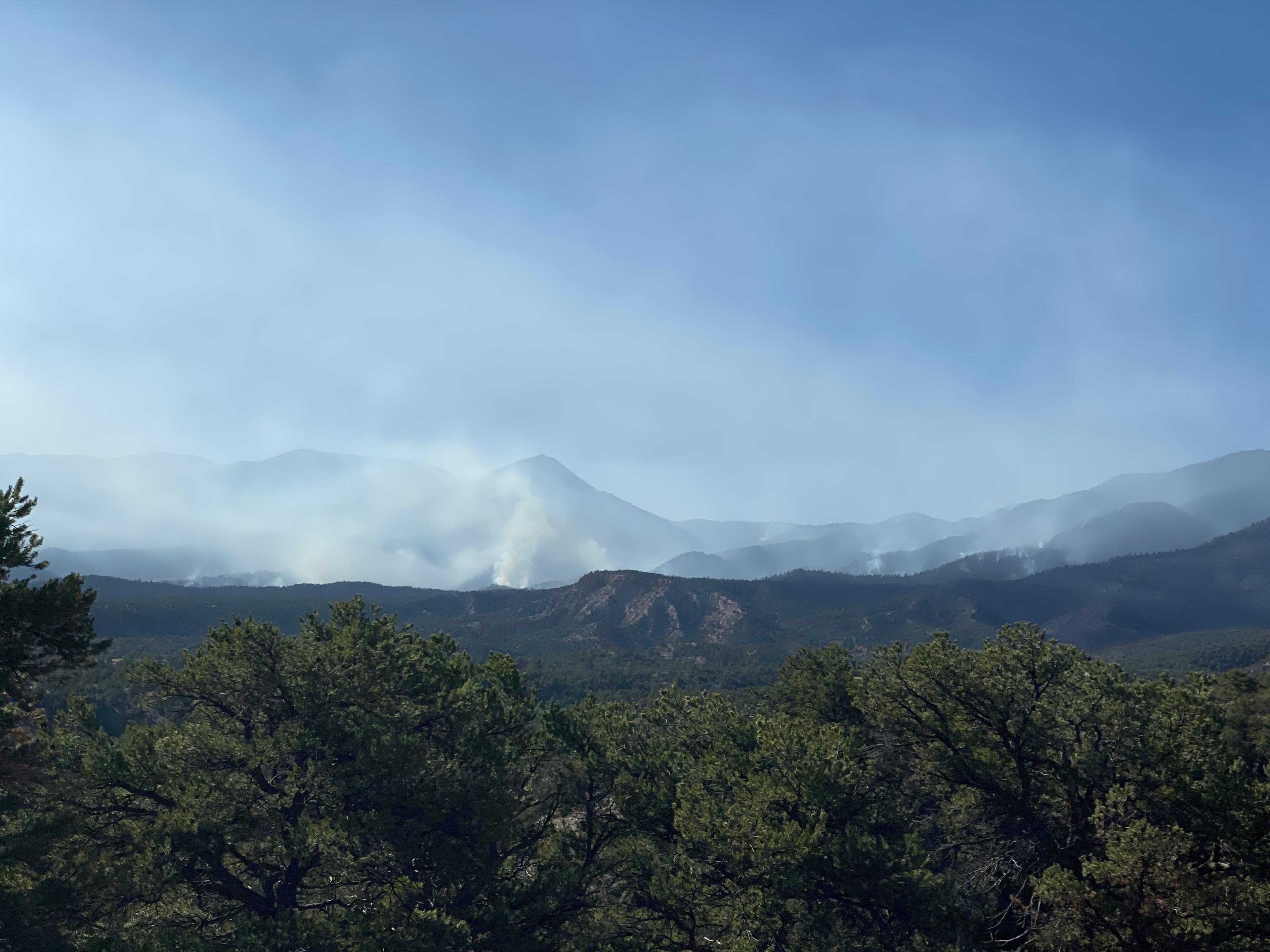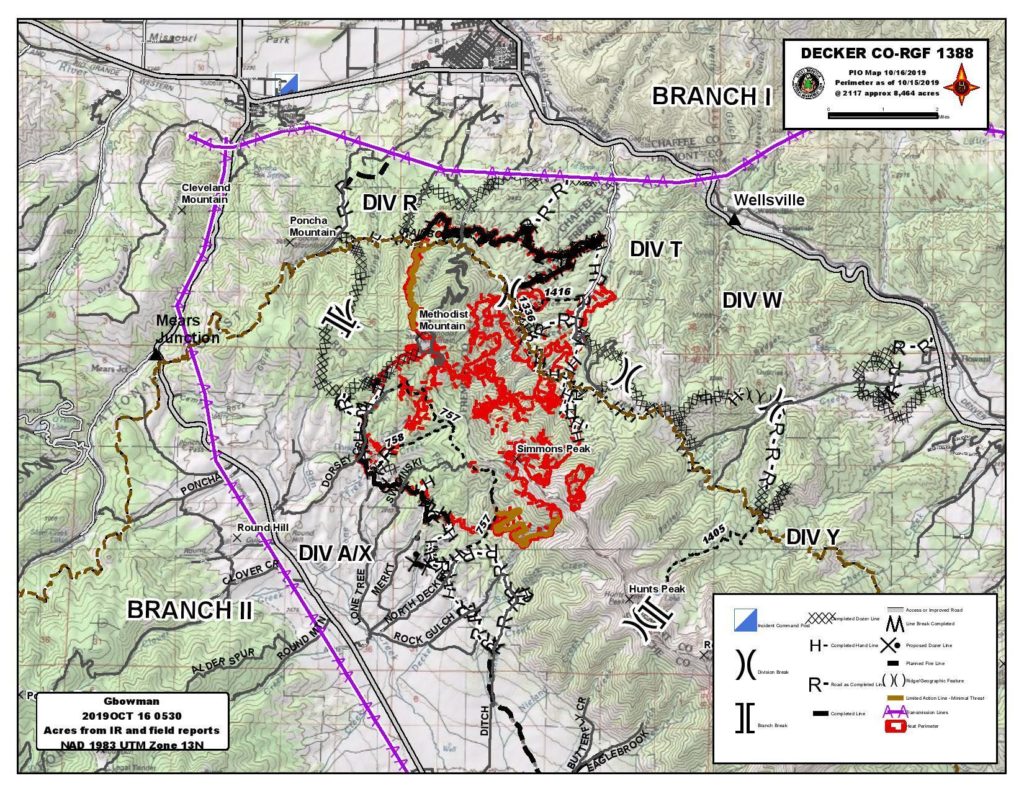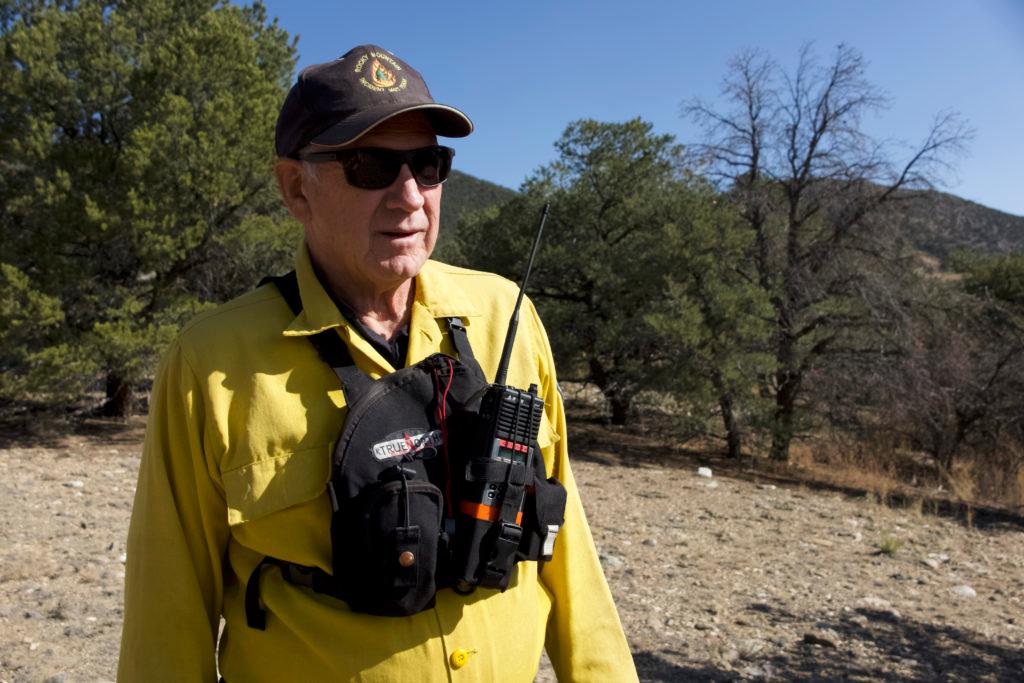
Things appear to be pretty normal at ground level in downtown Salida; the fall days are bright and sunny and life continues on like it always has.
But if you look up just a little, normalcy vanishes. In its place, you'll see the bands of thick gray smoke that billow from the mountains just outside city limits.
“We live in the West: expect fires," said 20-year resident Joann Kewish. “We’re not afraid; the fire department is doing a wonderful job.”
Kewish was returning a library book before she drove back toward the flames to her house in the nearby hamlet of Howard.
Firefighters have had a somewhat easier time in recent days. While the Decker Fire remains at 8,000 acres and 30 percent containment, it hasn't grown much since blowing up briefly over the weekend.

“This fire is very unpredictable. One day it’ll just sit there and simmer, next day it’ll make a big run," said Chaffee County Emergency Manager Richard Atkins.
Most residents are being allowed back into evacuated areas, although they will remain under pre-evacuation orders, ready to leave again on short notice. Atkins is the man who doles out the orange cards residents need to return to their homes, a system designed to help keep track of people should the situation take another turn for the worse.
The 720 firefighters at work on the Decker Fire are up against difficult terrain. Scientists also say the fuels have never been this dry so late in the year.

The Sangre de Christo wilderness is overcrowded with trees, both living and dead. As a matter of policy, forest managers have allowed naturally-caused fires to spread, when safe, instead of rushing to put them out.
“We never just say ‘let it burn,’ but we are going to do limited suppression here and let it clean out, make the forest more healthy,” said Decker Fire Public Information Officer Rick Barton.
That was the approach the Forest Service followed after lightning ignited the Decker Fire in early September. However, dry and windy conditions forced a change in strategy late in the month. On Sept. 30, the fire blew up, scorching 1,700 acres in one day and burning down a house and a hunting cabin.
Since then, elite Type 1 fire crews have worked steadily on the side of the fire closest to homes and other property.

Ginger Lee and her husband went to look at the fire in its early days when it was just a couple of hundred acres.
“We said to ourselves ‘man, that’s just on the other side of the hill from us, are they gonna do something about it?” Lee recalled.
The Lee's house was included in the most recent mandatory evacuations. And while they've been cleared to return, the couple decided to spend at least one more night in their RV closer to town.
Lee is grateful for the firefighting effort, but questions why it wasn't more aggressive from the start. Once the fire is over, she hopes decision-makers to do a serious evaluation of their approach to the incident.
"I would imagine there will be a lot of sorting out to do," Lee said.









